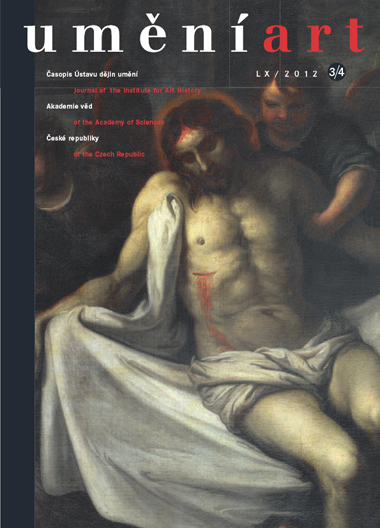Michaela Šeferisová Loudová
Das Altargemälde aus Dub an der March und eine neugefundene Ölskizze des Malers Josef Stern
One of the most important building projects undertaken in Moravia during the baroque period was the construction and decoration between 1735 and 1757 of the pilgrimage Church of the Purification of the Virgin in Dub nad Moravou. This prestigious project, which involved number of prominent artists, was financed by the Olomouc Chapter, whose members donated substantial sums to the church's construction. The main altar, paid for with a financial legacy left by Canon Jiří Jindřich, chevalier of Mayerswald, began to be built in 1748 and was based on a design by sculptor Gottfried Fritsch. On 12 June 1750 Josef Stern signed a contract to create a painting for the main altar, agreeing that it would be done within the next year based on a sketch he would be provided with by the commissioning party. However, surviving sources indicate that the painting, a large canvas on the theme Presentation of Jesus at the Temple and the Purification of the Virgin, took somewhat longer to complete, and the artist was not paid the final instalment of the total commission fee of 1,237 Gulden and 30 Kreuzer until March 1752. The contract enables a precise dating of the painting, which had previously been given as between 1751 and 1753, and it also shifts the date of Stern's arrival in Moravia to sometime before the start of 1750. A contractual modello of the painting has survived and is likely identical to the sketch mentioned in the contract, which was probably painted in the winter of 1749-1750 or the spring of 1750. The sketch, published in 1960 by Miloš Stehlík, was later regarded as missing, but in 2009 appeared in an art auction in Vienna and is now in a private collection in Lower Austria. The modello of the Dub painting, which is currently the earliest surviving sketch by Josef Stern, reveals the changes that Stern implemented in the final painting at the request of the chapter. The sketch contains all the elements for which Stern's other sketches have been praised, most notably its refined atmosphere, a feature by which the Dub sketch prefigures the modello for the painting of The Holy Trinity on the main altar in the church in Drnholec (circa 1757) or the Maulbertschesque sketch with Saints Leopold and Liborius for the painting of St James in Brno (1761).
Full-text in the Digital Library of the Czech Academy of Sciences:
https://kramerius.lib.cas.cz/uuid/uuid:947514d5-992a-3812-52ec-9560d2ad97af
< back

